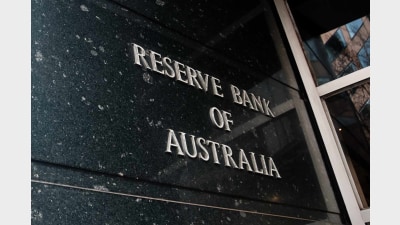Using alternatives to offset market risk


For too long, infrastructure and property have been lumped together as ‘alternative assets’ in portfolios. Yet, these assets are already in the mainstream. Large institutions use them, most notably Australia’s sovereign wealth fund, the Future Fund, and more and more investors are catching on to their benefits.
Infrastructure and property assets typically deliver reliable income streams and potential capital growth to investors, as well as portfolio diversification. Recently, demand has increased as investors consider property and infrastructure as substitutes for historically high-yielding Australian equities given the slowing Australian economy and fears of lower yields ahead coupled with the potential winding back of franking credit refunds.
Institutional investments
Institutional investors and large superannuation funds have long invested in infrastructure and global property assets.
Australia’s single largest investor, the Future Fund, has lead the way. At 31 March 2018, a significant 44.6 per cent of the Future Fund’s $154 billion portfolio was allocated to so-called ‘alternative assets’ including infrastructure, property and private equity, which has helped to buoy returns and reduce investment risks.
Australia’s sovereign wealth fund has earned a return of 10.4 per cent pa against a target of 6.5 per cent pa over 10 years. These returns have been helped by a high allocation to alternative assets, which aren’t highly correlated with stock markets.
Table one shows the asset allocation most recently reported for the Future Fund. Notably property and infrastructure are listed on different lines and are not bundled with ‘alternative assets’, indicating the acceptance of the former asset classes into the mainstream by Australia’s largest fund.
Table 1: Asset allocation of the Future Fund at 31 March, 2019
Source: Future Fund, portfolio update, at 31 March 2019.
Another large institutional investor, industry superannuation fund Hostplus, treats property and infrastructure as separate asset classes too, saying they can be classified as defensive investments when they “derive a high proportion of their returns from strong income (cash) flows rather than capital growth.””
AustralianSuper is another big investor in infrastructure assets and property, also treating them separately from alternative assets. AustralianSuper has significant holdings in Ausgrid, NSW Ports, Westconnex and Brisbane Airport. Elsewhere around the globe, AustralianSuper holds stakes in Indiana Toll Road, Manchester Airport Group and Vienna Airport.
In its Balanced (MySuper) investment option at 31 December 2018 for example, AustralianSuper had an allocation of 25.3 per cent to alternatives, more than its weighting to Australian shares. Infrastructure alone represents 12.7 per cent of its assets. This is shown in chart one.
Chart 1: AustralianSuper MySuper option asset allocation
Source: AustralianSuper Fact sheet, at 31 March 2019
Defence when you need it
With rising risks around the maturing economic cycle and ongoing trade tensions between the US and China, infrastructure and property provide a hedge against an equity market downturn. They have strong defensive qualities as they achieve a high proportion of their returns from income rather than capital.
As chart two illustrates, infrastructure and property are not correlated to asset classes in most Australians’ portfolios using the standard market benchmarks as a proxy for each asset class. The FTSE Developed Core Infrastructure 50/50 Index Hedged into AUD has become the global infrastructure benchmark used by industry participants including asset consultants and asset managers.
Chart 2: Risk and reward of asset classes since inception of FTSE infrastructure benchmark
Source: Morningstar Direct. All returns in Australian dollars. Risk-reward 1 January 2010 – 31 March 2019.
Chart two also shows that infrastructure has been among the best performing asset classes since inception of this benchmark on 1 January 2010 while also being lowly correlated with traditional asset classes that dominate Australian portfolios, including local and global equities, Australian listed property, Australian bonds and cash.
Most Australian investors with global bonds in their portfolio seek a hedged exposure to limit the impact of currency movements on income and the same is true of the standard international (ex-Australia) property index: the FTSE EPRA Nareit Developed ex Australia Rental Index AUD Hedged.
In chart three, a correlation of one means the asset values move together while a score of negative one means they move in opposite directions. Anything below 0.5 could be considered a low correlation.
Chart 3: Correlation of asset classes
Source: Morningstar Direct. All returns in Australian dollars. Risk-reward 1 January 2010 – 31 March 2019.
Appeal of ETFs to broaden property, infrastructure exposure
Superannuation funds and institutional investors are increasingly using exchange traded funds (ETFs) for cash equitisation, completion strategies and tactical opportunities. Transition management is also an area seeing greater use of ETFs.
In the case of a completion strategy, investors can ‘park’ their funds in an ETF for a low cost while they fine tune their direct real estate or infrastructure investment strategy and await deals to become available.
In the listed property and infrastructure space, where there are limited futures exposures, ETFs have also become highly attractive due to their secondary-market liquidity profile. Furthermore, cost considerations can be accommodated for wholesale investors.
It is important, too, that an ETF tracks the widely regarded and accepted market benchmarks for the relevant asset class. The VanEck Vectors FTSE Global Infrastructure (Hedged) ETF, for example, appeals to superannuation funds given it is indexed to the global benchmark for infrastructure, the FTSE Developed Core Infrastructure 50/50 Index Hedged into AUD, which delivers broad exposure across different types of infrastructure assets, with its largest weightings in electric utilities, transportation infrastructure, multi-utilities, and oil, gas and consumable fuels.
The trailing 12-month dividend yield of the IFRA Index was 3.5 per cent as at 30 April, and pays dividends four times a year.
In another example, the VanEck Vectors FTSE International Property (Hedged) ETF tracks the global listed property benchmark, the FTSE EPRA Nareit Developed ex Australia Rental Index AUD Hedged.
Given its defensive characteristics, listed property has also been performing strongly with the fall in government bond yields to record or near record lows levels, which has pushed up demand for income-producing REITs.
The trailing 12-month dividend yield of the REIT Index has remained stable at around four per cent. That enables the REIT to deliver a solid income, with dividend payments four times a year.
Russel Chesler is director – investments at VanEck.
Recommended for you
High risk, high return assets will become dangerous options for superannuation funds under the Federal Government’s planned $3 million superannuation changes, writes Brad Twentyman.
Economic policy can no longer ignore the macroeconomic impacts of Australia's superannuation system and the emerging policy implications, writes Tim Toohey.
In an age where climate concerns and social consciousness dominate headlines, it’s no surprise that investors are increasingly seeking investments that align with their values, writes Simon O’Connor.
How profit-for-member superannuation funds can embed 'commerciality with a heart' and marry a member-first culture with commercial outcomes.














Add new comment